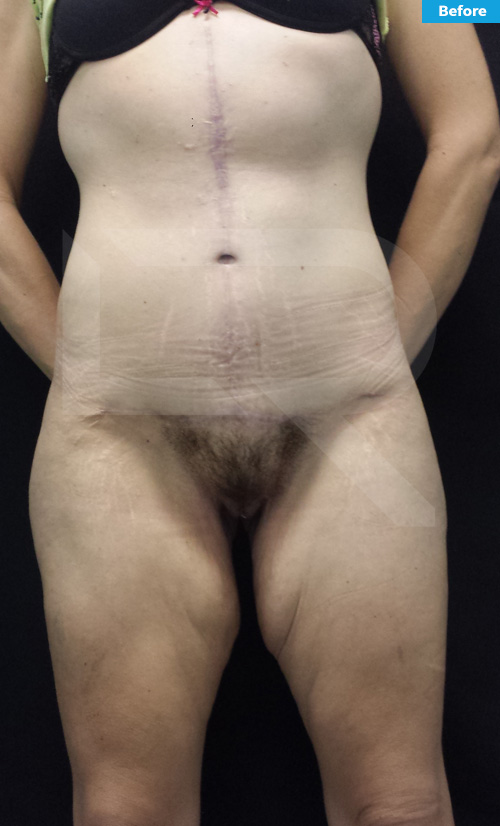Thigh Lift
When to consider a Thigh Lift
If you’ve got flab, stretch marks or excess skin in your thighs that does not improve with diet or exercise. If the shape of your thighs has been affected by pregnancy or massive weight loss. If you feel that your thighs are unattractive. If your self-confidence is marred by your thighs contour.
What are the risks?
Thigh reduction is relatively straightforward surgery. However, there are risks involved as with any surgery, and it should be performed by a qualified plastic surgeon. All surgery involves a degree of bleeding. In the vast majority of cases, this is minimal and easily controlled during the procedure itself. In a small percentage of patients, there may be a more significant collection of blood that may even require a return to the operating theatre to remove it.
Meticulous steps are taken before, during and after the surgery to ensure that the risk of infection is minimal. However, the risk of infection can never be completely eradicated. In a few cases, the incision can become red and inflamed. This usually settles down with simple antibiotics.
All surgery involves the formation of scars. The incision scars will be raised and pink for the first few months, but will usually settle into fine white lines after several months. In some cases the scars can remain raised and pink. The aim of the surgery is to hide the scars within the groin crease. In some cases, however, the scar can slip lower than expected and may become visible beneath the underwear.
There will be some change in sensation to the inner thigh. In most cases it will feel somewhat numb, but may even be overly sensitive. This usually settles down after a few months. In very few, however, the change can be permanent
Since the surgery involves the groin area, it can be difficult to keep it clean and dry and so there can be delayed healing in some areas. This is usually not a problem and settles down with simple dressings.
The surgery is close to the lymph nodes that drain the leg. The fluid that these lymphatics produces can gather in the thigh (seroma) and may need drainage in the outpatient department. It is possible, although extremely rare, that damage to these lymphatics can cause swelling in the leg (lymphoedema). In the unlikely event that this occurs, it usually settles on its own. In a very few cases, it can be permanent.

Frequently Asked Questions
How long does the procedure take?
Every situation is unique, but generally thigh lift surgery is about 2-4 hours long depending on individual circumstances and how extensive the procedure is.
Will it be performed under local or general anesthesia?
General Anesthesia.
How long will I be out of work?
Patients may return to work in 2 -3 weeks depending on job duties.
What should I expect after my procedure?
Patients will experience an important scar, temporary swelling, bruising, numbness and discomfort.
Do I need special testing prior to my procedure?
Testing is dependent on the patient’s health history and age. Testing is ordered for every patient.
Will this be covered by insurance?
No.
When can I start exercising after my procedure?
Light, normal activity can be resumed within 3 weeks following surgery.
How much does surgery cost?
Every situation is unique and the cost of surgery depends on several factors. The duration of the procedure varies on how extensive the surgery is. The duration will then determine the price of anesthesia and how long the surgical facility will be scheduled for. In order to provide the most accurate surgical fee estimate, it is necessary to meet with Dr. Redondo for a consultation.
